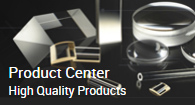Adverse grinding and correspondence.
②, hanging aperture sand too positive or too negative, causing the grinding time when grinding the edge or center does not have to;
③, grinding tightness inconsistent, inadequate local position grinding;
④, grinding dish passivation (surface too smooth), slurry concentration is too low for too long or it grinding capacity decreased.
⑤, swings too small or too close to the center position of eccentricity, caused by insufficient research grinding force;
⑥, inadequate or improper abrasive grinding time selection;
⑦, the pressure is too light or no effect on the rod string fixture on;
⑧, the lens is a large area of ground, slurry can not enter the grinding center.
⑨, fixtures pad of paper is too low, the lens is not exposed white plastic.
⑩, speed is too low.
Overcome method
①, strictly control the shortage of sand hanging off and the quality of the process before the destruction layer must be completely eliminated before the transfer to the grinder.
②, noodle-shaped sand strictly controlled precision within specifications.
③, re-dressing of the polishing dish or replacement of the grinding pan, pan consistent level surface,
④, after copper with a toothbrush or soft brush lightly polishing the surface of the dish by dish repair rebuilt LAP (Correction), add a new abrasive powder, adjusting the concentration of the polishing liquid.
⑤, adjust swings and offset positions, so that the upper jig and fixture rotation flexibility.
⑥, re-set the grinding time and select a new abrasive powder.
⑦, adjust the position of the rod string and pressure, so that the lens can be normal grinding.
⑧, slot wide open as much as possible of the abrasive paper points, the supply of the polishing liquid to fully open a few more slots
⑨, low white plastic car or thick pad of paper.
⑩, increase speed.
(B) scars (ki) generating reasons
①, sand hang time is short, the shortage has not worn off destruction layer of sand or hang grinding scratches produced has not been eliminated;
②, grinding lenses fit well with the dish, grinding tightness inconsistent;
③, grinding or polishing liquid dish cleaning well, which mixed with impurities;
④, when the original check with the iris, improper methods (by pushing the press or not clean dirt, etc.);
⑤, handling, dangerous operation when placing a lens;
⑥, relatively soft lens selection abrasive powder does not;
⑦, abrasive paper broken, scratched lenses or abrasive pan base is exposed to scratch the lens.
⑧, process the backlog, the first processing surface grinding powder dry, turn to scratch the machined surface jig inner surface when the mill is completed.
⑨, Ranko chose not direction or lens insertion.
Overcome method
①, strictly control the quality of sand hanging identify sand true scars produced by hanging;
②, dressing of the polishing dish-shaped face, the lens and the grinding dish has a good fit, elastic consistency grinding.
③, scrub and wash dishes grinding machine grinding, polishing solution has a good filter, do not let dirt into the slurry;
④, check with the original aperture, the first prototype of the lens surface and wipe clean, gently nip, there should be no interference of light or clear plastic re-clean the surface, do not push or pull.
⑤, pick up lens, insert baskets, transportation, storage process in accordance with the "look Ichiban six principles" and "Code of Practice lens' job, not free to operate; ⑥, select the corresponding soft material of abrasive paper and abrasive powder, wipe the lens with a soft cloth or skim inserted wipes;
⑦, abrasive paper using long or broken should be promptly replaced.
⑧, the first processing surface wipe clean blue or inserted row plate.
⑨, re-adjust the blue or reverse.

